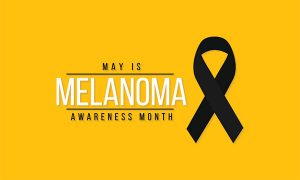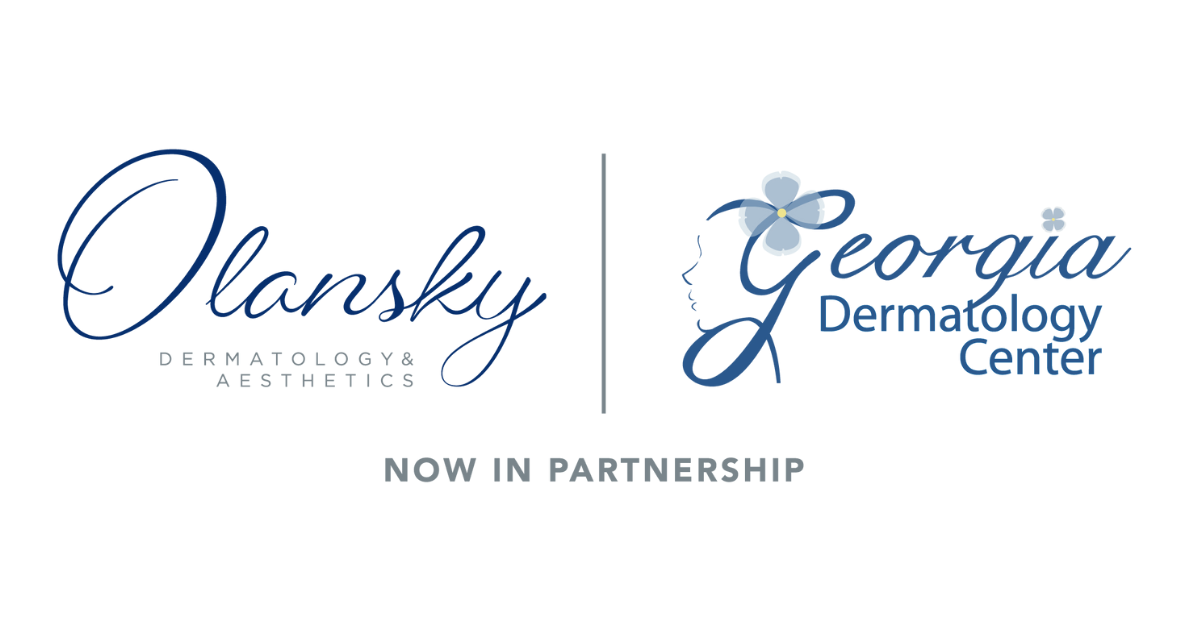Melanoma and Skin Cancer Awareness Month
May is Melanoma and Skin Cancer Awareness Month
 The U.S. Department of Health and Human Services set aside the entire month with the goal of empowering women and men to make health a priority by providing awareness tools and resources. The key purpose is to help everyone to understand their health risks, how to take action to improve overall health, and practice preventive care. Georgia Dermatology Center participates by emphasizing the importance of annual screenings for skin cancer (melanoma), and other skin conditions. If you have an unusual skin growth, an atypical mole, or have never had a full body skin screening call 770/781-5077 to schedule an appointment today!
The U.S. Department of Health and Human Services set aside the entire month with the goal of empowering women and men to make health a priority by providing awareness tools and resources. The key purpose is to help everyone to understand their health risks, how to take action to improve overall health, and practice preventive care. Georgia Dermatology Center participates by emphasizing the importance of annual screenings for skin cancer (melanoma), and other skin conditions. If you have an unusual skin growth, an atypical mole, or have never had a full body skin screening call 770/781-5077 to schedule an appointment today!
What is Melanoma and How is it Caused?
Before we discuss the severity of melanoma, it is best to know about other types of skin cancers that precede melanoma in severity.
Basal Cell Carcinoma. A slow growing common type of skin cancer and generally appears on areas exposed to UV rays such as the face, ears, neck, scalp, shoulders, and back. People with fair skin or light pigmented eyes are most at risk but everyone is at risk for the skin damage or scaring associated with Basel Cell Carcinoma.
Squamous Cell Carcinoma. Squamous Cell Carcinoma is similar to Basal Cell Carcinoma but grows faster and appear mainly around the eyes or mouth – a non-healing sore or red crusty scaly patch should be checked immediately. Aggressive forms can spread to other parts of the body and lead to irreversible skin damage or disfigurement.
Actinic Keratosis. The next form of skin cancer is called actinic keratosis and is considered to be pre-cancerous. Years of sun damage to the skin is the main cause and even though most lesions are benign, a diagnosis of actinic keratosis puts patients at greater risk for developing skin cancer – a biopsy of tissue will determine if the lesion is cancerous.
Melanoma. Melanoma is the most dangerous form of skin cancer and causes cancerous growths to develop when unrepaired DNA damage to skin cells triggers mutations that lead the skin cells to multiply rapidly and form malignant tumors. Moles, brown spots, and growths on the skin are usually harmless but not always – melanoma kills an estimated 9,940 people in the US annually. Current research indicates that family history, genetics and environmental factors such as ultraviolet (UV) ray exposure are the main causes of melanoma. Sunblock and sun protective clothing are some of the best ways to prevent melanoma from developing.
Risk Factors
People of any age and any race can get melanoma, but some people are at higher risk. The more risk factors you have, the more at risk you are for developing melanoma if you do not practice prevention and protection. Risk factors for melanoma are:
White Males Over 50. Although people of any race and age can get melanoma, men in this demographic are at particularly high risk for melanoma. Men are more prone to skip application of sunscreen on their backs and scalp, as often removing a shirt is a spontaneous act, and remembering to bring a hat when planning to be outside is an afterthought. Men typically do not carry around sunscreen, whereas women can throw a bottle in their purse. As a result, higher rates of melanoma on the back and scalp are found in this cohort this group, particularly as many men don’t pay much attention to changes in their skin and overall skin care.
Family History of Melanoma. Melanomas often run in families, and the more affected, the higher your risk. Certain genes have been identified that occur in people with familial melanoma which can be tested for, but others may not have an identifiable gene problem. People with light colored or red hair and lightly pigmented skin, especially prone to freckles, are at the highest risk for sunburn and subsequent melanoma.
Atypical Nevi. Atypical or dysplastic moles/nevi are a common genetic condition, where people usually have several large moles comprised of more than one color. The moles may be identified in childhood, increasing in size and number through early adulthood. An especially high risk for melanoma results from the combination of atypical moles and family history.
Moles are Present at Birth. Being born with a mole increases the risk for developing melanoma. The bigger the mole – the greater the risk. Dr. Gross can determine when it is appropriate for moles to be biopsied and/or removed.
Ultraviolet Light Exposure. Although we know that sunlight is an important resource for certain vitamins we need, sunlight is also a carcinogen to human skin. Exposure to both UVB rays, which cause sunburns, and UVA rays, which cause tanning, increases your chance of getting skin cancer. The more you tan and burn, the greater your chances of getting skin cancer. In fact, having just one severe sunburn as a child can contribute to your risk.
How to Identify Melanoma and Skin Cancer
The first signs of cancer can appear in one or more atypical moles. That’s why it’s so important to recognize any changes of the moles on your body. Look for the “ABCDE” signs of melanoma, and if you see one or more, make an appointment with Dr. Gross at Georgia Dermatology Center for a thorough examination. The ABCDE melanoma signs are as follows:
A – Asymmetrical Shape. Melanoma lesions are often irregular, or not symmetrical in shape. Benign moles are usually symmetrical.
B – Border. Typically, non-cancerous moles have smooth, even borders. Melanoma lesions usually have irregular borders that are difficult to define.
C – Color. The presence of more than one color (blue, black, brown, tan, etc.) or the uneven distribution of color can sometimes be a warning sign of melanoma. Benign (non-cancerous) moles are usually a single shade of brown or tan.
D – Diameter. Melanoma lesions are often greater than 6 millimeters in diameter (approximately the size of a pencil eraser).
E – Evolution. The evolution of your mole(s) has become the most important factor to consider when it comes to diagnosing a melanoma. Knowing what is normal for YOU could save your life. If a mole has gone through recent changes in color and/or size, bring it to the attention of Dr. Gross at Georgia Dermatology Center immediately.
Melanoma and Skin Cancer Treatment
Dr. Gross removes the melanoma using a standard surgical method known as surgical excision, (or resection) which not only removes the melanoma but includes the borders/margins around the excised area. Surgery has made great advances in the past decade, and much less tissue is removed than was customary in the past. Patients do well after resection surgery because it is easier to tolerate and produces a much smaller scar.
Prevention
Skin cancer prevention is a relatively simple process for most people. In order to avoid the development of skin cancer, the individual should take some preventive care steps and avoid harmful UV light. The best way to prevent melanoma is to routinely examine your skin for any unusual lesions or changes. An annual full body skin exam is essential in identifying potentially cancerous moles and lesions so that Dr. Gross can regularly follow changes in atypical moles.
If you spend a lot of time outdoors it is critical for you to use a full spectrum SPF 30 sunscreen, re-applied every 30 minutes, to block out harmful UV rays. Don’t forget scalp and/or hair part, ears, back of neck, hands, behind knees and top of feet.
If you have a lesion on your skin that looks suspicious don’t wait to contact Georgia Dermatology Center, located in Cumming, GA, providing services to patients in North Atlanta including Alpharetta, Johns Creek, Milton, Roswell, Dawsonville, Canton, Buford, Gainesville, Sandy Springs, and Suwanee Georgia. Also, schedule appointments for all of your family members.












